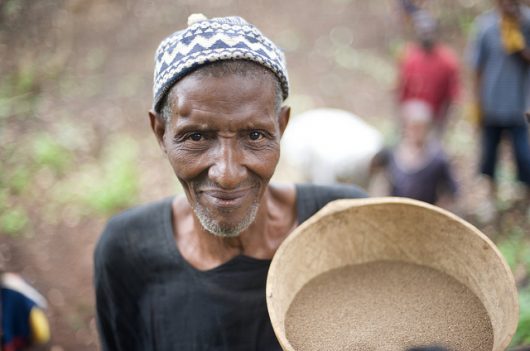Why Is Mali Poor?

Despite achieving the Millennium Development Goal of reducing hunger by 50 percent, Mali continues to struggle with extreme poverty. 50 percent of the population lives on less than $1.25 a day. There are nearly 59,000 internally displaced people and 143,500 Malian refugees located in neighboring countries. More than 600,000 Malians are in need of food assistance. A low-income nation, Mali was ranked 179 out of 188 countries on the 2015 Human Development Index. Though Mali’s economy is projected to grow by 5 percent over the 2017-2019 period and all economic sectors are projected to contribute to this growth, poverty persists. Why is Mali poor?
The answer to this question must consider the negative effects that drought and erratic rainfall have had on the country. Climate change has also led to higher temperatures, less rainfall and growing desertification in Mali, already one of the hottest countries in the world. 90 percent of the rural population works in the agricultural sector. Most farming is done on a subsistence basis; therefore, there is little to no reinvestment made in mechanization. Due to the adverse conditions, 25 percent of families are moderately to severely food insecure. During the 2016 lean season, approximately 315,000 Malians experienced severe food insecurity. One in three Malian children under the age of five is affected by stunting, a condition brought on by poor nutrition which affects both physical and cognitive development.
With an undiversified economy dependent on commodity exports, Mali is also extremely vulnerable to fluctuations in global commodity prices and the consequences of climate change. Though growth accelerated to 7 percent in 2014, its highest level in over a decade, and is expected to remain steady at 5 percent, Mali’s economic prospects are contingent on several important factors, including the stability of global prices for cotton and gold, Mali’s two biggest exports. Climatic shocks that negatively affect harvests could also cause a drop in economic growth and an increase in food insecurity.
Another contributing factor to why Mali is poor is the military coup that took place in the country in 2012. The coup resulted in the occupation of the northern regions of Mali by armed non-state groups. The signing of a peace agreement in 2015 between the Malian government and two rebel coalitions allowed for the implementation of a program of accelerated development in the northern regions. Due to fragile security and attacks on United Nations forces and the Malian army by terrorist groups in the northern regions, putting the program into action is difficult.
In addition to adverse weather conditions and conflict, poverty in Mali has also been perpetuated by the lack of access to education and career training. According to the United Nations Development Programme (UNDP), the expected amount of schooling in Mali is 8.4 years, while the average amount of schooling is only 2.3 years. Educational programs such as those implemented by the Cooperative for Assistance and Relief Everywhere (CARE) have taken steps to make education more accessible to children in Mali, particularly those who have been out of school for a prolonged period of time.
“In Mali, 89 [percent] of out-of-school students who enrolled in a CARE accelerated learning program also completed it,” says CARE’s Senior Technical Advisor for Education, Katherine Begley. “100 [percent] of them successfully transitioned into formal schools.”
With the emphasis put on reaching those most affected by conflict and poverty, it is the belief of organizations like CARE that the cycle of poverty can be ended in Mali.
– Amanda Quinn
Photo: Flickr
